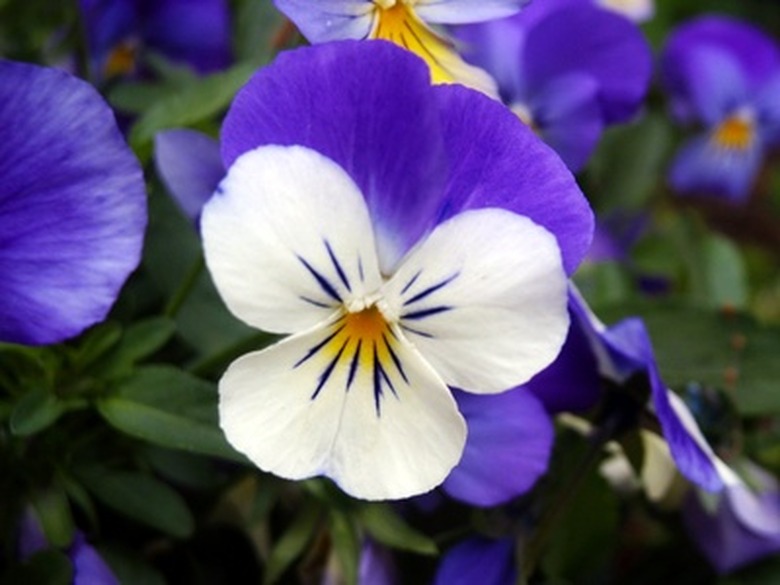Bugs That Eat Viola Plant Blooms
The tender petals and sepals of viola or pansy blooms make succulent grazing for a range of common garden pests and insects. Most commonly, pests will feed by piecing and sucking out the plant sap, but others will chew and consume the plant tissues. Insect feeding is not usually deadly to the plant, which can often regrow tissues to compensate for the damage over time. If an infestation quickly becomes severe, small plants such as viola can be lost.
Aphids
Aphids are very small, soft-bodied insects that act as vampires, sucking the life out of a wide range of garden plants, including violas. They use a small proboscis to tap into the plant tissues and slurp out liquids that carry nutrients and water that provides turgor pressure to keep the plants upright. Aphid activity can cause leaves to droop, wilt and die back or become severely misshapen, weak and disease-prone.
- The tender petals and sepals of viola or pansy blooms make succulent grazing for a range of common garden pests and insects.
- Most commonly, pests will feed by piecing and sucking out the plant sap, but others will chew and consume the plant tissues.
Spider Mites
Spider mites are small arthropods related to spiders that use elongated mouth parts to pierce the plant tissues and suck out the sap. Spider mites are very difficult to see with the naked eye and can be brown, red, green or bronze in color. They can multiply quickly and can leave small piercings that look like dried white specks when infestation is light but decimate tissue and easily kill delicate plants like violas when infestation is heavy.
Slugs
Garden slugs slowly inch across the foliage and flowers of viola and other soft tissue plants most actively during the dark, cool night hours. They chew and ingest plant tissues as they go and leave a trail of iridescent slime that allows gardeners to see their path. Kill slugs with poisonous snail bait or trap and drown them in a low-edged saucers of fresh beer for an organic, animal- and child-safe alternative.
